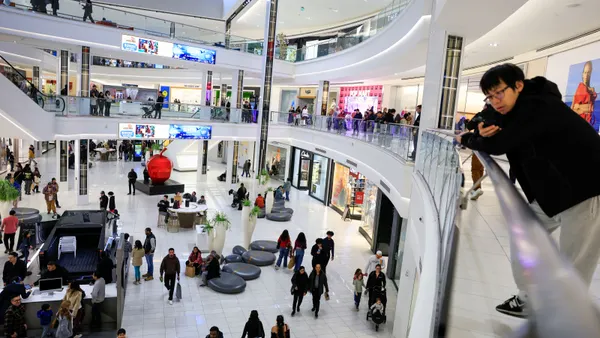A decade ago, pop-up stores were a way for retailers, mostly small ones, to occupy empty retail space on a temporary basis, and landlords to fill up dead space with temporary leases. Back then, no one thought the idea would last. But now, retail businesses from e-commerce to traditional brick-and-mortar department stores, large and small, are using pop-ups to entice customers, provide retail “experiences,” shake up staid images, and manage partnerships and product lines.
An old-fashioned idea
The idea of a pop-up actually stems from well-worn retail strategies — hustlers with stuff to sell in the back of a car, t-shirt and bracelet makers at outdoor festivals, and flea market vendors are among those who have been putting up and taking down temporary retail space for decades. Trunk shows in the 19th century were a popular way for traveling sales folk to bring merchandise to customers who couldn’t come to the store.
Target was one of the first big retailers to seize on the pop-up concept in the early 2000s, making it more than a temporary way to fill neglected retail space. With its then-innovative relationship with fashion designer Isaac Mizrahi, Target made a splash in 2003 with a pop-up store in Rockefeller Center during the holidays.
Where pop-ups pop up
Of course, pop-up shops are still a mainstay of outdoor events (though it’s now a “merch tent” and likely to be run by a corporation), and farmers and flea markets. But pop-ups are also now found in shopping districts, inside malls and department stores, and art galleries, among others.
Real estate startup Storefront is enabling retailers to easily find space for short leases on the street level, too. Dubbed the “Airbnb for retail” by TechCrunch, Storefront has found temporary locations in sometimes unique spaces in New York, San Francisco, and Los Angeles for 1,000 businesses, many of which use the space for pop-up stores.
Airports, whose retail offerings have expanded far beyond the magazine stands and travel shops of old into, essentially, upscale malls, increasingly also feature pop-up stores from retailers and food vendors, offering seasonal products or testing concepts.
Who’s popping up
These days, retailers of all types and sizes are experimenting with the pop-up concept. For example, Nordstrom, seemingly ready to shed its staid upscale reputation, has jumped all over the idea with a store-within-a-store approach.
The department store has found success with in-store pop-ups that are partnerships with Topshop, BaubleBar, and a shoe line from Sarah Jessica Parker, among others. The retailer has also begun a successful “pop-in @ Nordstrom” campaign featuring what it calls “an ongoing series of themed pop-up shops meant to excite and intrigue our customers. For each pop-in, Olivia Kim curates an eclectic mix of goods and houses them in specially designed spaces that encourage interaction and engagement.”
E-commerce retailers are also using pop-ups to expand their reach and give consumers a first-hand look at their goods. In fact, that was the first reason jewelry e-retailer BaubleBar established a pop-up shop. The company found that they actually drove sales, and has expanded its pop-up campaigns since.
Many cities and neighborhoods are encouraging small businesses to establish pop-up stores. This allows for businesses to test out a retail presence without sinking too much money upfront, while helping revitalization of certain areas in the cities. Popuphood in Oakland, CA has helped a few businesses with initial pop-up ventures that eventually became permanent retail establishments, for example.
And seasonal pop-ups help retailers small and large meet the surging demand of peak shopping times like the holidays.
Finally, as with Target’s early innovative partnership with fashion designers, pop-ups are a way to showcase new products or concepts. Apple, Google, Microsoft and other tech companies, for example, are using pop-ups that way.
The pop-up is no longer a desperation move or an old-fashioned idea — and many are morphing into permanent retail spaces. No matter how long they’re designed to last, pop-up stores as a retail idea are likely here to stay for quite a while. They require a level of planning that incorporates the brand awareness, attention to detail, and customer service required of any e-commerce or brick-and-mortar endeavor.
Would you like to see more retail news like this in your inbox on a daily basis? Subscribe to our Retail Dive email newsletter. You may also want to read Retail Dive's look at six digital tools targeting impulse shoppers.














